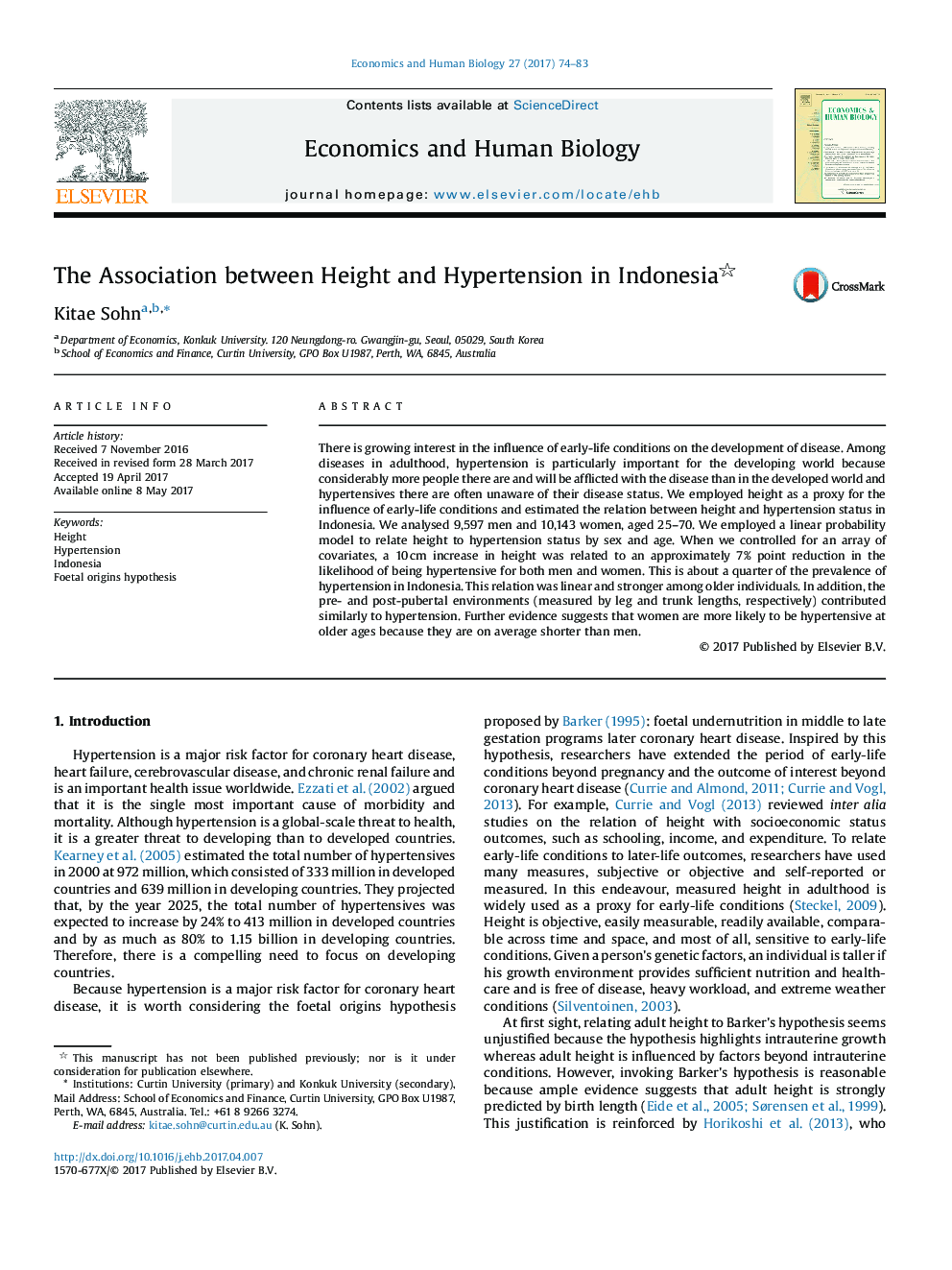| Article ID | Journal | Published Year | Pages | File Type |
|---|---|---|---|---|
| 5056766 | Economics & Human Biology | 2017 | 10 Pages |
â¢Hypertension is a leading cause of morbidity and mortality worldwide.â¢We used height as a proxy for early-life conditions for Indonesia.â¢A 10 cm increase in height was related to a 7% point reduction in hypertension.â¢This relation was linear and stronger among older individuals.â¢The pre- and post-pubertal environments similarly contributed to hypertension.
There is growing interest in the influence of early-life conditions on the development of disease. Among diseases in adulthood, hypertension is particularly important for the developing world because considerably more people there are and will be afflicted with the disease than in the developed world and hypertensives there are often unaware of their disease status. We employed height as a proxy for the influence of early-life conditions and estimated the relation between height and hypertension status in Indonesia. We analysed 9,597 men and 10,143 women, aged 25-70. We employed a linear probability model to relate height to hypertension status by sex and age. When we controlled for an array of covariates, a 10Â cm increase in height was related to an approximately 7% point reduction in the likelihood of being hypertensive for both men and women. This is about a quarter of the prevalence of hypertension in Indonesia. This relation was linear and stronger among older individuals. In addition, the pre- and post-pubertal environments (measured by leg and trunk lengths, respectively) contributed similarly to hypertension. Further evidence suggests that women are more likely to be hypertensive at older ages because they are on average shorter than men.
